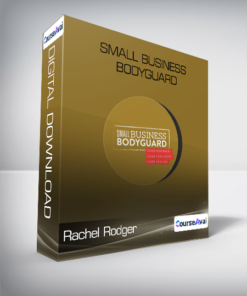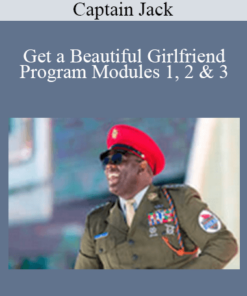Portfolio Margin and SPAN Margin Trading Tactics – Trading Dominion
Question and Answer
What is Portfolio Margin?
Portfolio Margin is Purchase and SPAN Margin Trading Tactics – Trading Dominion courses at here with PRICE $ $ Learn trades which have been specifically designed to take advantage of portfolio and SPAN margin..
How does Portfolio Margin Purchase?
Purchase Portfolio Margin and SPAN Margin Trading Tactics – Trading Dominion courses at here with PRICE $ $ Learn trades which have been specifically designed to take advantage of portfolio and SPAN margin.
What is your returns?
your returns is Increase and have much more safety..
How does your returns Increase?
Increase your returns and have much more safety.
What is portfolio?
portfolio is Why use or SPAN margin?.
How does portfolio use?
Why use portfolio or SPAN margin?
What is Most people?
Most people is think that portfolio margin (PM) or SPAN margin is just used by traders who want to get significant leverage, and therefore need to be comfortable taking larger risks..
How does Most people think that?
Most people think that portfolio margin (PM) or SPAN margin is just used by traders who want to get significant leverage, and therefore need to be comfortable taking larger risks.
What is leverage?
leverage is There certainly is with portfolio or SPAN margin, but what most people don’t realize is that, if used properly, you can use PM or SPAN margin in order to construct risk profiles which are much safer than what you could construct with RegT margin..
How does leverage certainly is?
There certainly is leverage with portfolio or SPAN margin, but what most people don’t realize is that, if used properly, you can use PM or SPAN margin in order to construct risk profiles which are much safer than what you could construct with RegT margin.
What is certain trade types?
certain trade types is There are even which are completely not viable at all with RegT margin, and can only be done with PM or SPAN margin..
How does certain trade types are?
There are even certain trade types which are completely not viable at all with RegT margin, and can only be done with PM or SPAN margin.
What is This course?
This course is will teach you how PM and SPAN works, how to construct, and how to manage trades which are specific to PM and SPAN..
How does This course will teach?
This course will teach you how PM and SPAN works, how to construct, and how to manage trades which are specific to PM and SPAN.
What is We?
We is primarily focus on creating trades which have much more safety than RegT trades, such that even in the event of a black swan your overall portfolio is protected..
How does We primarily focus?
We primarily focus on creating trades which have much more safety than RegT trades, such that even in the event of a black swan your overall portfolio is protected.
What is you?
you is Can afford to lose your entire trading account?.
How does you Can?
Can you afford to lose your entire trading account?
What is Instructors?
Instructors is who teach conventional trading strategies with RegT accounts will typically state that your trading account should consist of a maximum of 20% of your liquid net worth..
How does Instructors teach?
Instructors who teach conventional trading strategies with RegT accounts will typically state that your trading account should consist of a maximum of 20% of your liquid net worth.
What is you?
you is This implies that if want to have a trading account of $100K, then you’ll need a liquid net worth of $100K / 20% = $500K.
How does you implies?
This implies that if you want to have a trading account of $100K, then you’ll need a liquid net worth of $100K / 20% = $500K
What is top of that,?
top of that, is On they will typically recommend that you keep 50% of your trading account in cash..
How does top of that, will typically recommend?
On top of that, they will typically recommend that you keep 50% of your trading account in cash.
What is your $100K trading account,?
your $100K trading account, is So out of you can only trade $50K..
How does your $100K trading account, can only trade?
So out of your $100K trading account, you can only trade $50K.
What is The reason?
The reason is for these two recommendations is because they don’t teach you how to protect your trading portfolio from black swan events..
How does The reason is?
The reason for these two recommendations is because they don’t teach you how to protect your trading portfolio from black swan events.
What is The typical advice?
The typical advice is is that a black swan may come every 5 to 10 years or so, and when it comes you have to be willing to have your entire account get wiped out..
How does The typical advice is?
The typical advice is that a black swan may come every 5 to 10 years or so, and when it comes you have to be willing to have your entire account get wiped out.
What is you?
you is Since only had 20% of your liquid net worth invested in your account, and you were keeping 50% of that trading account in cash, then you should have sufficient extra funds in order to start over again..
How does you only had?
Since you only had 20% of your liquid net worth invested in your account, and you were keeping 50% of that trading account in cash, then you should have sufficient extra funds in order to start over again.
What is We?
We is don’t find the above situation acceptable..
How does We don’t find?
We don’t find the above situation acceptable.
What is We?
We is teach you how to structure your trading account such that your overall portfolio can withstand a black swan event..
How does We teach?
We teach you how to structure your trading account such that your overall portfolio can withstand a black swan event.
What is you?
you is This therefore allows to actively trade a larger portion of your net worth, and tends to allow you to sleep much better at night..
How does you allows?
This therefore allows you to actively trade a larger portion of your net worth, and tends to allow you to sleep much better at night.
What is a generic number.?
a generic number. is Let’s just pick.
How does a generic number. Let’s?
Let’s just pick a generic number.
What is you?
you is If can consistently make a 20% return on your entire account every year, then you would be performing at levels comparable to the best hedge funds in the world..
How does you can consistently make?
If you can consistently make a 20% return on your entire account every year, then you would be performing at levels comparable to the best hedge funds in the world.
What is this yearly return?
this yearly return is So let’s apply to the criteria we had listed above..
How does this yearly return let’s?
So let’s apply this yearly return to the criteria we had listed above.
What is We?
We is had mentioned that most people will teach to only trade 20% of your liquid net worth, and then keep 50% of your trading account in cash..
How does We had mentioned?
We had mentioned that most people will teach to only trade 20% of your liquid net worth, and then keep 50% of your trading account in cash.
What is you?
you is If had a liquid net worth of $500K, then you could have a trading account of $100K and you would actively be trading $50K of that account..
How does you had?
If you had a liquid net worth of $500K, then you could have a trading account of $100K and you would actively be trading $50K of that account.
What is you?
you is If were to then make a 20% yearly return on your traded capital of $50K, that comes to $50K * 20% = $10K profit per year..
How does you were?
If you were to then make a 20% yearly return on your traded capital of $50K, that comes to $50K * 20% = $10K profit per year.
What is you?
you is Even if were to trade your entire $100K, and not implement the suggestion of keeping 50% in cash, then you would be making $20K per year, on the assumption that you had a total liquid net worth of $500K..
How does you were?
Even if you were to trade your entire $100K, and not implement the suggestion of keeping 50% in cash, then you would be making $20K per year, on the assumption that you had a total liquid net worth of $500K.
What is you?
you is Do want to trade for a living?.
How does you Do?
Do you want to trade for a living?
What is the info?
the info is Let’s use from above, which is what is recommended by mentors teaching RegT style options strategies..
How does the info Let’s?
Let’s use the info from above, which is what is recommended by mentors teaching RegT style options strategies.
What is you?
you is If wanted to trade for a living, and your expectation was to be able to make $10K profit per month, that implies needing to make $120K profit per year..
How does you wanted?
If you wanted to trade for a living, and your expectation was to be able to make $10K profit per month, that implies needing to make $120K profit per year.
What is a 20% yearly return,?
a 20% yearly return, is If that’s going to represent that implies that you need a total trading account in the size of $120K / 20% = $600K..
How does a 20% yearly return, going to represent?
If that’s going to represent a 20% yearly return, that implies that you need a total trading account in the size of $120K / 20% = $600K.
What is you?
you is If were to keep 50% in cash, that implies needing an account of $1.2 million, and if your account is 20% of your liquid net worth then you need to have a total liquid net worth of $1.2 M / 20% = $6 million..
How does you were?
If you were to keep 50% in cash, that implies needing an account of $1.2 million, and if your account is 20% of your liquid net worth then you need to have a total liquid net worth of $1.2 M / 20% = $6 million.
What is the concept?
the concept is So while of only trading 20% of your liquid net worth and keeping 50% of that in cash sounds completely reasonable, you need to marry that with the reality listed above in terms of how much money you can expect to make overall..
How does the concept only trading?
So while the concept of only trading 20% of your liquid net worth and keeping 50% of that in cash sounds completely reasonable, you need to marry that with the reality listed above in terms of how much money you can expect to make overall.
What is you?
you is If want to trade for a living and make $10K per month, then you’ll need to have a liquid net worth of $6 million…….if you trade using traditional methods..
How does you want?
If you want to trade for a living and make $10K per month, then you’ll need to have a liquid net worth of $6 million…….if you trade using traditional methods.
What is you?
you is If don’t have a spare $6 million lying around, then you’ll need to learn how to be able to trade a much larger portion of your net worth, and also how to trade a much larger portion of your trading account, while doing so with as much safety as possible..
How does you don’t have?
If you don’t have a spare $6 million lying around, then you’ll need to learn how to be able to trade a much larger portion of your net worth, and also how to trade a much larger portion of your trading account, while doing so with as much safety as possible.
What is You?
You is can only do that if you have a portfolio of trades that can withstand black swan events, yet still provide you with a very good return..
How does You can only do?
You can only do that if you have a portfolio of trades that can withstand black swan events, yet still provide you with a very good return.
What is you’ll?
you’ll is That’s exactly what learn to do in this course..
How does you’ll exactly?
That’s exactly what you’ll learn to do in this course.
What is black swan protection expensive??
black swan protection expensive? is Isn't.
How does black swan protection expensive? Isn't?
Isn't black swan protection expensive?
What is black swan protection?
black swan protection is Think of as insurance for your trading account..
How does black swan protection Think?
Think of black swan protection as insurance for your trading account.
What is you?
you is Do spend money on car, home, health or life insurance?.
How does you Do?
Do you spend money on car, home, health or life insurance?
What is you?
you is Of course do, and you likely couldn’t even imagine being without it..
How does you do,?
Of course you do, and you likely couldn’t even imagine being without it.
What is insurance?
insurance is So if is so important, then why wouldn’t you insure your trading account, which may contain a large portion of your net worth?.
How does insurance is so?
So if insurance is so important, then why wouldn’t you insure your trading account, which may contain a large portion of your net worth?
What is Most traders?
Most traders is would answer “because it’s too expensive and black swan events are very rare”..
How does Most traders would answer?
Most traders would answer “because it’s too expensive and black swan events are very rare”.
What is you?
you is How often do plan on getting cancer?.
How does you often do?
How often do you plan on getting cancer?
What is you?
you is How often do plan on kicking the bucket?.
How does you often do?
How often do you plan on kicking the bucket?
What is we?
we is Just because only plan to die once isn’t a reason to not have life insurance..
How does we only plan?
Just because we only plan to die once isn’t a reason to not have life insurance.
What is we?
we is Just because don’t plan on getting cancer every year is not a reason to not have health insurance..
How does we don’t plan?
Just because we don’t plan on getting cancer every year is not a reason to not have health insurance.
What is an event?
an event is So just because is rare, this is no reason to not have insurance to cover that risk..
How does an event is?
So just because an event is rare, this is no reason to not have insurance to cover that risk.
What is I’m?
I’m is willing to bet that you’ll see many more black swan events than the number of times you’ll get cancer or die..
How does I’m willing?
I’m willing to bet that you’ll see many more black swan events than the number of times you’ll get cancer or die.
What is important point?
important point is Another very is that out-of-the-money structures are much easier to protect against black swans than at-the-money structures..
How does important point is?
Another very important point is that out-of-the-money structures are much easier to protect against black swans than at-the-money structures.
What is this case,?
this case, is In “easier” implies much cheaper, and getting a good return on margin for out-of-the-money structures can only be done with portfolio or SPAN margin..
How does this case, implies much?
In this case, “easier” implies much cheaper, and getting a good return on margin for out-of-the-money structures can only be done with portfolio or SPAN margin.
What is Black swan protection?
Black swan protection is does cost money though, so in the course we tend to address this in three ways:.
How does Black swan protection does cost?
Black swan protection does cost money though, so in the course we tend to address this in three ways:
What is We?
We is 1) design income trades which are very resilient against a strong down move, yet can still produce a very attractive return on margin..
How does We design?
1) We design income trades which are very resilient against a strong down move, yet can still produce a very attractive return on margin.
What is leverage PM and SPAN margin?
leverage PM and SPAN margin is Being able to is almost essential to doing this effectively..
How does leverage PM and SPAN margin Being?
Being able to leverage PM and SPAN margin is almost essential to doing this effectively.
What is We?
We is 2) have some strategies which are primarily focused around portfolio level protection, rather than income generation..
How does We have?
2) We have some strategies which are primarily focused around portfolio level protection, rather than income generation.
What is We?
We is 3) also have a number of creative financing strategies for the costs incurred for the black swan protection..
How does We also have?
3) We also have a number of creative financing strategies for the costs incurred for the black swan protection.
What is an entire portfolio?
an entire portfolio is Learn to manage rather than a single trade.
How does an entire portfolio Learn?
Learn to manage an entire portfolio rather than a single trade
What is Most traders?
Most traders is are on a constant and never ending hunt for the holy grail..
How does Most traders are?
Most traders are on a constant and never ending hunt for the holy grail.
What is They?
They is want to find the perfect trade which can make a fantastic return in every market condition as well as withstand a black swan event without taking a loss..
How does They want?
They want to find the perfect trade which can make a fantastic return in every market condition as well as withstand a black swan event without taking a loss.
What is you?
you is Allow me to save time and money, and tell you that there’s a reason it’s called the “holy grail”, and that reason is that it doesn’t exist..
How does you Allow?
Allow me to save you time and money, and tell you that there’s a reason it’s called the “holy grail”, and that reason is that it doesn’t exist.
What is You?
You is need to start by creating two broad categories of trades: income trades versus hedges..
How does You need?
You need to start by creating two broad categories of trades: income trades versus hedges.
What is Hedges?
Hedges is are there to protect your portfolio, and you should therefore not expect to make money from them most of the time..
How does Hedges are?
Hedges are there to protect your portfolio, and you should therefore not expect to make money from them most of the time.
What is The ideal situation?
The ideal situation is with a hedge is that you can get creative with finance strategies such that you can end up with “free hedges”, while not compromising the power of the hedge too much..
How does The ideal situation is?
The ideal situation with a hedge is that you can get creative with finance strategies such that you can end up with “free hedges”, while not compromising the power of the hedge too much.
What is it?
it is When comes to incomes trades, you also need to realize that there are many different market conditions, which are hard to predict in advance..
How does it comes?
When it comes to incomes trades, you also need to realize that there are many different market conditions, which are hard to predict in advance.
What is You?
You is have strong down, grind down, sideways, grind up and strong up markets…..not to mention that vertical skew and term structure can also potentially affect the performance of your income trades..
How does You have?
You have strong down, grind down, sideways, grind up and strong up markets…..not to mention that vertical skew and term structure can also potentially affect the performance of your income trades.
What is one trade?
one trade is Rather than trying to find which “does it all”, you’ll typically get a much smoother equity growth curve if you’re actively trading a few different trades at the same time..
How does one trade trying?
Rather than trying to find one trade which “does it all”, you’ll typically get a much smoother equity growth curve if you’re actively trading a few different trades at the same time.
What is You?
You is may have one hedge which is great for protecting against black swan events, and another hedge which is great for a grind down market..
How does You may have?
You may have one hedge which is great for protecting against black swan events, and another hedge which is great for a grind down market.
What is You?
You is may have one income trade which is great for a grind up or bullish market, and then another income trade which is great for sideway choppy markets..
How does You may have?
You may have one income trade which is great for a grind up or bullish market, and then another income trade which is great for sideway choppy markets.
What is You?
You is also need to keep your entire portfolio risk under control by analyzing the 1st and 2nd order greeks of your entire portfolio, rather than having a myopic view of just a single trade..
How does You also need?
You also need to keep your entire portfolio risk under control by analyzing the 1st and 2nd order greeks of your entire portfolio, rather than having a myopic view of just a single trade.
What is you?
you is Last but not least, can use a profit hump from one trade as a hedge for another trade..
How does you can use?
Last but not least, you can use a profit hump from one trade as a hedge for another trade.
What is you?
you is For example, may have one trade which has developed a beautiful profit hump which has built up just under the current market levels..
How does you may have?
For example, you may have one trade which has developed a beautiful profit hump which has built up just under the current market levels.
What is you?
you is Once know that, then this allows you to potentially take more bullish directional risk with a new income trade, since you know that even if you are completely wrong, you have that nice profit hump waiting just below you from the other trade..
How does you know?
Once you know that, then this allows you to potentially take more bullish directional risk with a new income trade, since you know that even if you are completely wrong, you have that nice profit hump waiting just below you from the other trade.
What is You?
You is therefore want to learn to manage an entire portfolio of trades rather than a single trade for the following reasons: a) have a blend of income trades as well as hedges to protect your portfolio b) have a smoother equity curve, by implementing a few different trade types for both hedges as well as income trades (where each trade type may be better suited for a different market condition) c) portfolio level risk control by analyzing the 1st and 2nd order greeks of your entire portfolio d) being able to leverage one trade against one another in order to reduce risk and increase profits Get Portfolio Margin and SPAN Margin Trading Tactics – Trading Dominion, Only Price $152.
How does You want?
You therefore want to learn to manage an entire portfolio of trades rather than a single trade for the following reasons: a) have a blend of income trades as well as hedges to protect your portfolio b) have a smoother equity curve, by implementing a few different trade types for both hedges as well as income trades (where each trade type may be better suited for a different market condition) c) portfolio level risk control by analyzing the 1st and 2nd order greeks of your entire portfolio d) being able to leverage one trade against one another in order to reduce risk and increase profits Get Portfolio Margin and SPAN Margin Trading Tactics – Trading Dominion, Only Price $152
What is a standard trade look?
a standard trade look is What does like?.
How does a standard trade look does?
What does a standard trade look like?
What is The following risk graph?
The following risk graph is is from one of our “mechanical combos”, which combines an income STT trade together with a financed downside hedge..
How does The following risk graph is?
The following risk graph is from one of our “mechanical combos”, which combines an income STT trade together with a financed downside hedge.
What is You?
You is can see that we have a super flat T+0 line from around -8% down through to as high as the market wants to go..
How does You can see?
You can see that we have a super flat T+0 line from around -8% down through to as high as the market wants to go.
What is the nice theta distribution?
the nice theta distribution is Also notice and spacing, as represented by the various T+X lines..
How does the nice theta distribution Also notice?
Also notice the nice theta distribution and spacing, as represented by the various T+X lines.
What is top?
top is On of that, backtesting has shown that this trade can withstand a black swan event such as the Aug 2015 crash..
How does top backtesting?
On top of that, backtesting has shown that this trade can withstand a black swan event such as the Aug 2015 crash.
What is backtest?
backtest is Automated of the mechancial combo #1.
How does backtest Automated?
Automated backtest of the mechancial combo #1
What is our members?
our members is Although many of prefer to trade using their own discretion, we have also created some trades which can be traded mechanically..
How does our members prefer?
Although many of our members prefer to trade using their own discretion, we have also created some trades which can be traded mechanically.
What is Here?
Here is are the results of our “mechanical combo #1”: Setup Automated backtest of 1671 trades from 2014 to today New trade initiated every 15 mins Profit target: $600 Max loss: -$1500 Slap on/off trade; no adjustments Initial PM: $2100 Results % winners: 89.47% % losers: 10.53% Avg DIT: 35.2 Avg winner: $600 Avg loser: -$1100 Avg P&L: $420 Does it scale?.
How does Here are?
Here are the results of our “mechanical combo #1”: Setup Automated backtest of 1671 trades from 2014 to today New trade initiated every 15 mins Profit target: $600 Max loss: -$1500 Slap on/off trade; no adjustments Initial PM: $2100 Results % winners: 89.47% % losers: 10.53% Avg DIT: 35.2 Avg winner: $600 Avg loser: -$1100 Avg P&L: $420 Does it scale?
What is We?
We is have multiple people in our community who trade in large size..
How does We have?
We have multiple people in our community who trade in large size.
What is various members?
various members is There are in our community who run hedge funds; some with millions of dollars under management..
How does various members are?
There are various members in our community who run hedge funds; some with millions of dollars under management.
What is We?
We is also have many private individuals who simply trade their own money, but do so in large size..
How does We also have?
We also have many private individuals who simply trade their own money, but do so in large size.
What is our members?
our members is For example, one of tends to trade 600 tranches of our trades at a time..
How does our members tends?
For example, one of our members tends to trade 600 tranches of our trades at a time.
What is You?
You is can therefore start with just a single tranche, which may have a portfolio margin as low as $5K and planned capital of $10K, but also have the confidence of knowing that as your account gets larger and larger, that you’ll still be able to do the same trades in much larger size..
How does You can?
You can therefore start with just a single tranche, which may have a portfolio margin as low as $5K and planned capital of $10K, but also have the confidence of knowing that as your account gets larger and larger, that you’ll still be able to do the same trades in much larger size.
What is the following modules?
the following modules is Click on any of in order to see the details of the lessons contained inside..
How does the following modules Click?
Click on any of the following modules in order to see the details of the lessons contained inside.
What is Introduction Welcome (1m 20s) Quick personal introduction (8m 20s) Course overview (20m 5s) Academy tour Analysis spreadsheets (20 min) Trading?
Introduction Welcome (1m 20s) Quick personal introduction (8m 20s) Course overview (20m 5s) Academy tour Analysis spreadsheets (20 min) Trading is for a living (17m 11s) Portfolio margin (28m 12s) Foundations Introduction (4m 57s) Quick visual intro to the 1st order greeks (9m 31s) 2nd order greeks (55m 10s) Reading the inflection points on an expiration line (5m 57s) Greeks of a put debit spread (9m 2s) Delta Power (6m 31s) Buying cheaper greeks (13m 32s) Comparing relative spread prices (8m 11s) OTM options decay faster than ATM options (17m 55s) How far OTM should we go in order to sell credit spreads?.
How does Introduction Welcome (1m 20s) Quick personal introduction (8m 20s) Course overview (20m 5s) Academy tour Analysis spreadsheets (20 min) Trading points?
Introduction Welcome (1m 20s) Quick personal introduction (8m 20s) Course overview (20m 5s) Academy tour Analysis spreadsheets (20 min) Trading for a living (17m 11s) Portfolio margin (28m 12s) Foundations Introduction (4m 57s) Quick visual intro to the 1st order greeks (9m 31s) 2nd order greeks (55m 10s) Reading the inflection points on an expiration line (5m 57s) Greeks of a put debit spread (9m 2s) Delta Power (6m 31s) Buying cheaper greeks (13m 32s) Comparing relative spread prices (8m 11s) OTM options decay faster than ATM options (17m 55s) How far OTM should we go in order to sell credit spreads?
What is (3m 16s) Relationship?
(3m 16s) Relationship is between volatility and time (8m 8s) ATM structure pricing and IV (8m 17s) How the T+0 is affected by a change in IV (4m 13s) Options in further out in time expirations are easier to manage (9m 8s) IV versus HV (18m 55s) Vertical Skew – part 1 (43m 14s) Vertical Skew – part 2 (50m 51s) Trading further out in time (14m 36s) Measuring skew steepness (18m 13s) Term Structure (7m 5s) Put / Call parity (24m 2s) IB TWS Tool for skew analysis (3m 3s) Backtesting (21m 51s) Market circuit breakers (13m 13s) Walking the option chain (15m 52s) Foundations summary (4m 25s) Space Trip Trade (STT) STT introduction (8m 18s) Standard Space Trip Trade (23m 25s) Standard STT – sample setup (31m 3s) Standard STT – let’s do it live (22m 0s) Optimizing entry (25m 6s) Legging in (6m 41s) Middle STT (11m 30s) Front STT (6m 5s) Front STT – comparisons (15m 25s) Front STT – let’s do it live (16m 12s) Road Trip and Space Trip (3m 44s) Bearish STT (33m 5s) Bullish STT (15m 34s) Bullish STT – sample setup prior to the Brexit event (17m 46s) Trade management – intro and quick review (8m 2s) Downside management (10m 30s) Downside adjustments – rolling down (0m 53s) Downside adjustments – long put (2m 33s) Downside adjustments – put debit spread (38m 52s) Downside adjustments – adding another STT (1m 44s) Downside adjustments – adding a bearish STT (0m 35s) Downside adjustments – 1 SD OTM balanced butterfly (3m 34s) Downside adjustments – hitting pause (28m 34s) Downside adjustments – hitting pause – comparing expirations (8m 2s) Downside adjustments – price reversion (10m 32s) Downside adjustments – hedging off bearish adjustments (10m 4s) Downside adjustments – using stocks or futures (7m 58s) Downside adjustments – TOS contingent orders (4m 21s) Upside management (0m 52s) Harvesting (13m 55s) Upside adjustments (7m 42s) Price layering (17m 35s) Playing whack-a-mole (4m 12s) Taking profits (8m 33s) Quick hit STT (22m 41s) Opportunistic management (3m 15s) STTs on the call side (7m 0s) Using futures options with a RegT account (3m 50s) STT – summary (2m 49s) Black Swan Hedge (BSH) Black swan examples (20m 42s) BSH core concepts (33m 21s) BSH vs teenies (9m 35s) First BSH configuration (64m 12s) Second BSH configuration (11m 2s) Third BSH configuration (7m 20s) Fourth BSH configuration (30m 2s) Upside adjustments.
How does (3m 16s) Relationship time?
(3m 16s) Relationship between volatility and time (8m 8s) ATM structure pricing and IV (8m 17s) How the T+0 is affected by a change in IV (4m 13s) Options in further out in time expirations are easier to manage (9m 8s) IV versus HV (18m 55s) Vertical Skew – part 1 (43m 14s) Vertical Skew – part 2 (50m 51s) Trading further out in time (14m 36s) Measuring skew steepness (18m 13s) Term Structure (7m 5s) Put / Call parity (24m 2s) IB TWS Tool for skew analysis (3m 3s) Backtesting (21m 51s) Market circuit breakers (13m 13s) Walking the option chain (15m 52s) Foundations summary (4m 25s) Space Trip Trade (STT) STT introduction (8m 18s) Standard Space Trip Trade (23m 25s) Standard STT – sample setup (31m 3s) Standard STT – let’s do it live (22m 0s) Optimizing entry (25m 6s) Legging in (6m 41s) Middle STT (11m 30s) Front STT (6m 5s) Front STT – comparisons (15m 25s) Front STT – let’s do it live (16m 12s) Road Trip and Space Trip (3m 44s) Bearish STT (33m 5s) Bullish STT (15m 34s) Bullish STT – sample setup prior to the Brexit event (17m 46s) Trade management – intro and quick review (8m 2s) Downside management (10m 30s) Downside adjustments – rolling down (0m 53s) Downside adjustments – long put (2m 33s) Downside adjustments – put debit spread (38m 52s) Downside adjustments – adding another STT (1m 44s) Downside adjustments – adding a bearish STT (0m 35s) Downside adjustments – 1 SD OTM balanced butterfly (3m 34s) Downside adjustments – hitting pause (28m 34s) Downside adjustments – hitting pause – comparing expirations (8m 2s) Downside adjustments – price reversion (10m 32s) Downside adjustments – hedging off bearish adjustments (10m 4s) Downside adjustments – using stocks or futures (7m 58s) Downside adjustments – TOS contingent orders (4m 21s) Upside management (0m 52s) Harvesting (13m 55s) Upside adjustments (7m 42s) Price layering (17m 35s) Playing whack-a-mole (4m 12s) Taking profits (8m 33s) Quick hit STT (22m 41s) Opportunistic management (3m 15s) STTs on the call side (7m 0s) Using futures options with a RegT account (3m 50s) STT – summary (2m 49s) Black Swan Hedge (BSH) Black swan examples (20m 42s) BSH core concepts (33m 21s) BSH vs teenies (9m 35s) First BSH configuration (64m 12s) Second BSH configuration (11m 2s) Third BSH configuration (7m 20s) Fourth BSH configuration (30m 2s) Upside adjustments
What is ThinkOrSwim Tips Setting?
ThinkOrSwim Tips Setting is the volatility model Managing your trades (17m 55s) Price triggered contingent orders (7m 23s) Study triggered contingent orders (9m 29s) Seasonality indicator Standard deviations indicator IV and HV indicator Volatility term structure indicator Triple Keltner and ATR Trend indicator combo My main TOS grid Butterfly pricer indicator Managing the entire portfolio Back STT + BSH (40m 0s) Entering during different IV levels (12m 26s) Bullish STT + BSH (8m 53s) Protected jeep (17m 37s) Tips on managing your entire portfolio (30m 53s) Summary Final summary (41m 27s) That’s all folks (6m 36s) Bonus online meetings Meeting on Jan 19, 2017 (1h 18m) Meeting on Jan 26, 2017 (1h 24m) Meeting on Feb 2, 2017 (1h 19m) Meeting on Feb 9, 2017 (1h 23m) Meeting on Feb 16, 2017 (1h 25m) Meeting on Feb 23, 2017 (1h 30m) Meeting on Mar 2, 2017 (1h 33m) Meeting on Mar 9, 2017 (1h 31m) Advanced options analysis spreadsheets.
How does ThinkOrSwim Tips Setting triggered?
ThinkOrSwim Tips Setting the volatility model Managing your trades (17m 55s) Price triggered contingent orders (7m 23s) Study triggered contingent orders (9m 29s) Seasonality indicator Standard deviations indicator IV and HV indicator Volatility term structure indicator Triple Keltner and ATR Trend indicator combo My main TOS grid Butterfly pricer indicator Managing the entire portfolio Back STT + BSH (40m 0s) Entering during different IV levels (12m 26s) Bullish STT + BSH (8m 53s) Protected jeep (17m 37s) Tips on managing your entire portfolio (30m 53s) Summary Final summary (41m 27s) That’s all folks (6m 36s) Bonus online meetings Meeting on Jan 19, 2017 (1h 18m) Meeting on Jan 26, 2017 (1h 24m) Meeting on Feb 2, 2017 (1h 19m) Meeting on Feb 9, 2017 (1h 23m) Meeting on Feb 16, 2017 (1h 25m) Meeting on Feb 23, 2017 (1h 30m) Meeting on Mar 2, 2017 (1h 33m) Meeting on Mar 9, 2017 (1h 31m) Advanced options analysis spreadsheets
What is You’ll?
You’ll is get access to advanced spreadsheets which allow you to get detailed information on various spreads (naked options, verticals, broken wing butterflies, black swan hedges, etc)..
How does You’ll get?
You’ll get access to advanced spreadsheets which allow you to get detailed information on various spreads (naked options, verticals, broken wing butterflies, black swan hedges, etc).
What is These spreadsheets?
These spreadsheets is can be leveraged in order to try to find extra edge in a position prior to entry (eg seeing that the spread right next to the one you plan to purchase might be available a bit “cheap”), or to help you track your existing positions such that you can see both 1st order and 2nd order greeks..
How does These spreadsheets can be leveraged?
These spreadsheets can be leveraged in order to try to find extra edge in a position prior to entry (eg seeing that the spread right next to the one you plan to purchase might be available a bit “cheap”), or to help you track your existing positions such that you can see both 1st order and 2nd order greeks.
What is an option chain deep dive?
an option chain deep dive is While doing can be potentially useful, note that there is absolutely no need to use these spreadsheets for either setup or management of your trades..
How does an option chain deep dive doing?
While doing an option chain deep dive can be potentially useful, note that there is absolutely no need to use these spreadsheets for either setup or management of your trades.
What is We?
We is have all of our trade plans fully documented, and entry and management is based on traditional things such as greeks, the dollar value of certain strikes, or expected moves..
How does We have?
We have all of our trade plans fully documented, and entry and management is based on traditional things such as greeks, the dollar value of certain strikes, or expected moves.
What is You?
You is can therefore fully trade all of our setups without ever opening any of these spreadsheets..
How does You can?
You can therefore fully trade all of our setups without ever opening any of these spreadsheets.
What is analysis?
analysis is Position.
How does analysis Position?
Position analysis
What is You’ll?
You’ll is also have access to a spreadsheet where you enter your entire (multi-leg) position, and you will then get a full analysis of the 1st and 2nd order greeks for each strike as well as the roll-up greek values for the entire position..
How does You’ll also have?
You’ll also have access to a spreadsheet where you enter your entire (multi-leg) position, and you will then get a full analysis of the 1st and 2nd order greeks for each strike as well as the roll-up greek values for the entire position.
What is You’ll?
You’ll is also be able to display either a 2D or 3D surface graph of any 1st or 2nd order greek of your choosing..
How does You’ll also be?
You’ll also be able to display either a 2D or 3D surface graph of any 1st or 2nd order greek of your choosing.
What is you?
you is This will give a level of visibility which is not currently available in any retail trading platform..
How does you will give?
This will give you a level of visibility which is not currently available in any retail trading platform.
What is a variety of trades?
a variety of trades is Learn.
How does a variety of trades Learn?
Learn a variety of trades
What is the main course?
the main course is In you’ll learn many important concepts which will allow you to take your trading knowledge to the next level..
How does the main course learn?
In the main course you’ll learn many important concepts which will allow you to take your trading knowledge to the next level.
What is You’ll?
You’ll is also learn a variety of initial “core trades” which will teach you to combine income trades together with partially or fully financed black swan hedges..
How does You’ll also learn?
You’ll also learn a variety of initial “core trades” which will teach you to combine income trades together with partially or fully financed black swan hedges.
What is our Mastermind group?
our Mastermind group is Apart from the above, is always hard at work at coming up with creative new trades and trade variants..
How does our Mastermind group is always?
Apart from the above, our Mastermind group is always hard at work at coming up with creative new trades and trade variants.
What is Here?
Here is are some examples (over 50 trades), all of which are fully documented in the private Mastermind forums..
How does Here are?
Here are some examples (over 50 trades), all of which are fully documented in the private Mastermind forums.
What is the unusual naming?
the unusual naming is (Please forgive some of for the trades. Our members have a sense of humor when it comes to naming trades).
How does the unusual naming forgive?
(Please forgive some of the unusual naming for the trades. Our members have a sense of humor when it comes to naming trades)
What is it’s?
it’s is While great to have access to so many trades as part of the community, some people may get a bit overwhelmed by having so many choices..
How does it’s have?
While it’s great to have access to so many trades as part of the community, some people may get a bit overwhelmed by having so many choices.
What is a concern?
a concern is If that’s for you, then don’t worry about it..
How does a concern don’t worry?
If that’s a concern for you, then don’t worry about it.
What is newer trades?
newer trades is Although there are many to choose from, you’ll be guided to the 2 or 3 current favorite trade plans once you join..
How does newer trades are?
Although there are many newer trades to choose from, you’ll be guided to the 2 or 3 current favorite trade plans once you join.
What is you’re?
you’re is Once comfortable trading 2 or 3 main “core trades” then you can optionally consider expanding your horizon to some of the other trade variants..
How does you’re trades”?
Once you’re comfortable trading 2 or 3 main “core trades” then you can optionally consider expanding your horizon to some of the other trade variants.
What is these variants?
these variants is Many of have been created by our Mastermind members, which is a testament to the fact that the course will teach you all of the core concepts you need in order to be able to develop the ability to create your own trades or trade variants..
How does these variants have been created?
Many of these variants have been created by our Mastermind members, which is a testament to the fact that the course will teach you all of the core concepts you need in order to be able to develop the ability to create your own trades or trade variants.
What is our?
our is Just being able to watch very experienced traders apply the concepts taught in the course, and see the trades evolve in front of your eyes, is something which is hugely valuable..
How does our Just being?
Just being able to watch our very experienced traders apply the concepts taught in the course, and see the trades evolve in front of your eyes, is something which is hugely valuable.
What is you?
you is Once see how our traders create, refine, test and optimize trades, you’ll slowly absorb these skills yourself..
How does you see?
Once you see how our traders create, refine, test and optimize trades, you’ll slowly absorb these skills yourself.
What is you?
you is This will allow to break the dependency chain from any of the gurus (including me), since you’ll now have the knowledge of how to adapt your trades to the market as the market itself continues to evolve..
How does you will allow?
This will allow you to break the dependency chain from any of the gurus (including me), since you’ll now have the knowledge of how to adapt your trades to the market as the market itself continues to evolve.
What is You?
You is can also apply this knowledge in order to customize a particular trade to your own personal preferences, risk tolerance, mechanical vs discretionary, or to your own psychology..
How does You can also apply?
You can also apply this knowledge in order to customize a particular trade to your own personal preferences, risk tolerance, mechanical vs discretionary, or to your own psychology.
What is you’ll?
you’ll is Below see a few of the trades from the main course or Mastermind community..
How does you’ll see?
Below you’ll see a few of the trades from the main course or Mastermind community.
What is Space Trip Trade MC1 trade Shark trade Fulcrum?
Space Trip Trade MC1 trade Shark trade Fulcrum is trade Here is a backtest of the Fulcrum2 trade, done by one of our members..
How does Space Trip Trade MC1 trade Shark trade Fulcrum trade?
Space Trip Trade MC1 trade Shark trade Fulcrum trade Here is a backtest of the Fulcrum2 trade, done by one of our members.
What is The columns?
The columns is shown are: start date, end date, days in trade, and profit/loss..
How does The columns shown?
The columns shown are: start date, end date, days in trade, and profit/loss.
What is The target profit?
The target profit is for a single tranche of this trade is $1K inside the tent, $500 if to the right of the tent, and there’s a max loss of -$2K..
How does The target profit is?
The target profit for a single tranche of this trade is $1K inside the tent, $500 if to the right of the tent, and there’s a max loss of -$2K.
What is The portfolio margin?
The portfolio margin is is approximately $10K..
How does The portfolio margin is approximately?
The portfolio margin is approximately $10K.
What is Golden Arches?
Golden Arches is trade T5 trade.
How does Golden Arches trade?
Golden Arches trade T5 trade
What is Here?
Here is are some interesting stats from a manual backtest on the T5, run by one of our members: Avg DIT: 10.46 Avg P&L: $820 Total trades: 26 # winners: 23 Largest winner: $3892 # losers: 3 Purchase Portfolio Margin and SPAN Margin Trading Tactics – Trading Dominion courses at here with PRICE $ $.
How does Here are?
Here are some interesting stats from a manual backtest on the T5, run by one of our members: Avg DIT: 10.46 Avg P&L: $820 Total trades: 26 # winners: 23 Largest winner: $3892 # losers: 3 Purchase Portfolio Margin and SPAN Margin Trading Tactics – Trading Dominion courses at here with PRICE $ $
 Rachel Rodger - Small Business Bodyguard
1 × $43.00
Rachel Rodger - Small Business Bodyguard
1 × $43.00 Managing Patient Emergencies - Robin Gilbert
1 × $85.00
Managing Patient Emergencies - Robin Gilbert
1 × $85.00 Living the Legacy - Bob Proctor
3 × $250.00
Living the Legacy - Bob Proctor
3 × $250.00 Affiliate Millionaires 3.0 2017 – Greg Davis
1 × $139.00
Affiliate Millionaires 3.0 2017 – Greg Davis
1 × $139.00 10 Steps to Greater Confidence and Self-Esteem - Alexis Meads
2 × $42.00
10 Steps to Greater Confidence and Self-Esteem - Alexis Meads
2 × $42.00 Complete Course of Astrology - George Bayer
1 × $93.00
Complete Course of Astrology - George Bayer
1 × $93.00 Barry Robinson – Elite Boxing for Combat Sports – Ring Craft
1 × $11.00
Barry Robinson – Elite Boxing for Combat Sports – Ring Craft
1 × $11.00 Zumba Fitness - Total Body Transformation System (2008)
1 × $28.00
Zumba Fitness - Total Body Transformation System (2008)
1 × $28.00 $100K Online Marketing Kit – Staci Ann
1 × $23.00
$100K Online Marketing Kit – Staci Ann
1 × $23.00 Global Foundation Feb-20 São Paulo Repeat Price - Gary M. Douglas & Dr. Dain Heer
1 × $235.00
Global Foundation Feb-20 São Paulo Repeat Price - Gary M. Douglas & Dr. Dain Heer
1 × $235.00 The Focused Mind State - Dr. Joel & Michelle Levey
1 × $13.00
The Focused Mind State - Dr. Joel & Michelle Levey
1 × $13.00 Captain Jack - Get a Beautiful Girlfriend Program Modules 1, 2 & 3
1 × $130.00
Captain Jack - Get a Beautiful Girlfriend Program Modules 1, 2 & 3
1 × $130.00 Kali Home Study Set - Jon Rister
1 × $53.00
Kali Home Study Set - Jon Rister
1 × $53.00 Mastering Lab Interpretation: Deciphering the Hidden Clues - Sean G. Smith
2 × $84.00
Mastering Lab Interpretation: Deciphering the Hidden Clues - Sean G. Smith
2 × $84.00 10 Dollar Time Bomb VIP – Ben Adkins
1 × $44.00
10 Dollar Time Bomb VIP – Ben Adkins
1 × $44.00 100k Coaching Shortcut Secret - Scott Jansen
1 × $52.00
100k Coaching Shortcut Secret - Scott Jansen
1 × $52.00 “Done-For-You” Client-Attraction Teleseminar Package – Michelle Schubnel
1 × $80.00
“Done-For-You” Client-Attraction Teleseminar Package – Michelle Schubnel
1 × $80.00 Release Technique CDs - Health & Fitness Mastery Course - Larry Crane
1 × $52.00
Release Technique CDs - Health & Fitness Mastery Course - Larry Crane
1 × $52.00 Command Z - Esozone Codex Brain Change Course
1 × $42.00
Command Z - Esozone Codex Brain Change Course
1 × $42.00 0-100k Case Study from Grant Ambrose
1 × $95.00
0-100k Case Study from Grant Ambrose
1 × $95.00 Advanced Concepts in Cardiovascular Care 2-Day Conference: Day One: Advanced ECG & Arrhythmia Interpretation - Karen M. Marzlin
1 × $85.00
Advanced Concepts in Cardiovascular Care 2-Day Conference: Day One: Advanced ECG & Arrhythmia Interpretation - Karen M. Marzlin
1 × $85.00 12 Minute Stage Crazy - Body of a Rock Star
2 × $22.00
12 Minute Stage Crazy - Body of a Rock Star
2 × $22.00 $200k Book Blueprint Training – Richelle Shaw
$200k Book Blueprint Training – Richelle Shaw
 [BIG Collection Real Estate] Real Estate Web Academy – Great Real Estate Giveaway
[BIG Collection Real Estate] Real Estate Web Academy – Great Real Estate Giveaway
 Millionaire Challenge LIVE Replay and Legacy Collection – Jon Mac
Millionaire Challenge LIVE Replay and Legacy Collection – Jon Mac
 'Quantum' Chakra Clearing and Balancing Series - Jonette Crowley
'Quantum' Chakra Clearing and Balancing Series - Jonette Crowley
 "Is Your Soul Allowing You To Heal?" -- All 7 Recordings in the Series (6 Hours of Audio Clearings)
"Is Your Soul Allowing You To Heal?" -- All 7 Recordings in the Series (6 Hours of Audio Clearings)